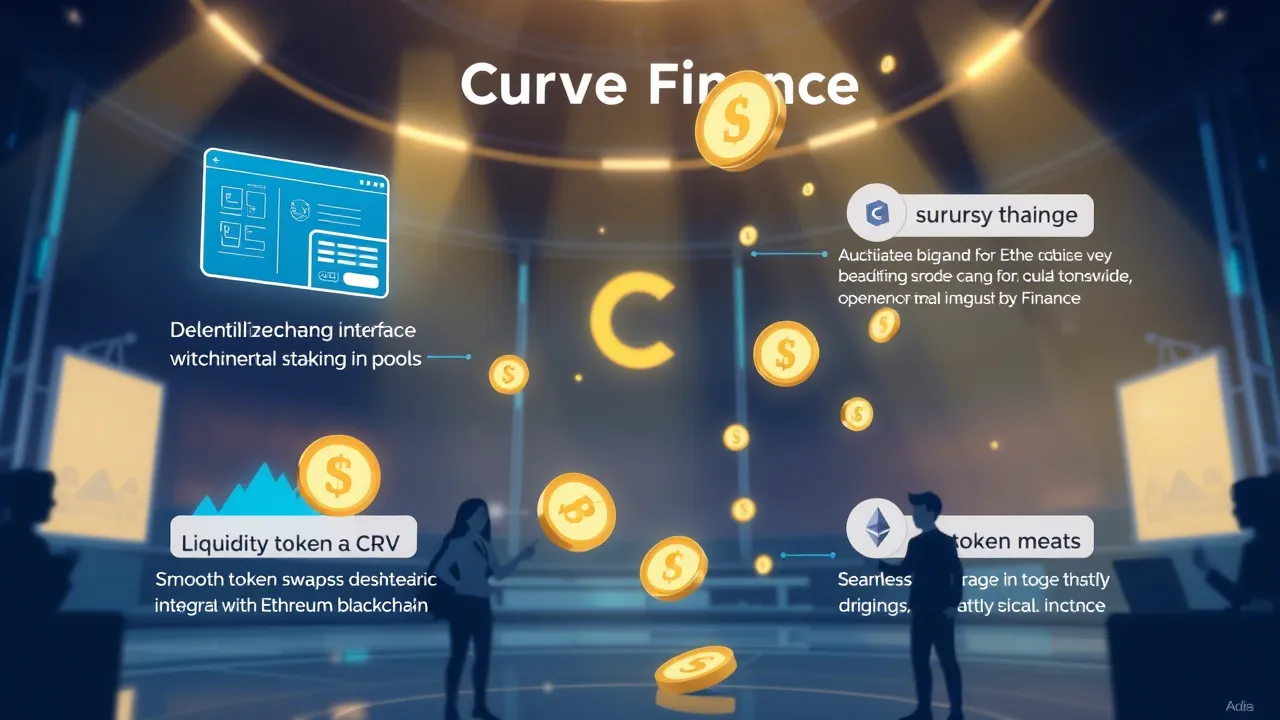Share
The Security Backbone of Curve Finance: Ensuring Trust in DeFi
STORY HIGHLIGHTS
- Introduction: The Importance of Security in DeFi
- Curve Finance's Proactive Security Measures
- Learning from Past Incidents
- Community and Ecosystem Impact
- Conclusion: A Secure Future for DeFi

Introduction: The Importance of Security in DeFi
"Trust is paramount in the DeFi space, and it is crucial to minimize the likelihood of Curve users being exposed to scams that leverage the Curve brand."\ — Curve Finance News
In the fast-paced world of decentralized finance (DeFi), where billions of dollars are at stake, security is not just a feature—it's a necessity. Curve Finance, a leading decentralized exchange (DEX) specializing in stablecoins, has emerged as a cornerstone of the DeFi ecosystem. With its focus on low slippage and high liquidity for stablecoin swaps, Curve has attracted significant user trust. However, this trust hinges on robust security measures, especially given the platform's history of high-profile exploits. This article explores how Curve Finance ensures the security of its platform and tokens, citing recent developments and partnerships that underscore its commitment to user protection.
Curve Finance's Proactive Security Measures
Curve Finance has implemented a comprehensive suite of security measures to protect its users and maintain the integrity of its platform:
-
Partnership with ChainPatrol: To combat the rising tide of scams and phishing attacks, Curve has partnered with ChainPatrol, a leading web3 security firm. Since their collaboration began, ChainPatrol has protected the Curve community from thousands of threats, including wallet-draining domains, phishing links, and impersonations on platforms like X, Discord, and Telegram. ChainPatrol's Telegram bot also enables fast reporting of suspicious links, adding an extra layer of protection.
-
Regular Security Audits: Curve undergoes frequent audits by reputable third-party firms to ensure its smart contracts are secure. These audits are critical for identifying vulnerabilities and ensuring the protocol operates as intended. However, Curve acknowledges that audits are not foolproof and emphasizes that users should always proceed with caution.
-
Bug Bounty Programs: To incentivize ethical hackers, Curve offers bug bounty programs, encouraging the discovery and reporting of potential vulnerabilities before they can be exploited.
-
Multi-Signature Wallets: For sensitive operations, Curve uses multi-signature wallets, requiring multiple approvals for transactions, which significantly reduces the risk of unauthorized access.
-
Community Reimbursement Program: Launched in December 2023, this program reimburses victims of hacks, such as the CRV Token hack, demonstrating Curve's dedication to supporting its users even in the face of adversity.
These measures collectively ensure that Curve Finance remains a secure and trustworthy platform for DeFi users.
Learning from Past Incidents
No DeFi project is immune to exploits, and Curve Finance has faced its share of challenges. In 2023, Curve suffered a $62 million exploit due to a reentrancy vulnerability in older versions of the Vyper compiler. This incident not only affected Curve but also impacted other DeFi projects, including PEGD, Metronome, and Alchemix, highlighting the interconnected nature of the DeFi ecosystem.
In response, Curve has taken significant steps to bolster its security:
-
Enhanced Audits and Testing: Post-exploit, Curve intensified its audit processes and introduced more rigorous testing protocols to prevent similar vulnerabilities.
-
Blocking Just-In-Time Attacks: Curve has implemented measures to block Just-In-Time attacks, a common tactic in DeFi exploits, further securing its platform.
-
Reducing Impermanent Loss: By integrating cTokens and yTokens, Curve minimizes impermanent loss for liquidity providers, making the platform more attractive and secure.
These lessons from past incidents have strengthened Curve's defenses and reinforced its commitment to user safety.
Community and Ecosystem Impact
Curve Finance's security is not just about protecting its own users—it's about safeguarding the entire DeFi ecosystem. The 2023 exploit demonstrated how a vulnerability in one protocol can cascade across others, affecting projects like PEGD, Metronome, and Alchemix. This interconnectedness underscores the importance of Curve's security measures for the broader DeFi landscape.
Additionally, projects like Convex, which holds a significant portion of veCRV (vote-locked CRV tokens), play a crucial role in Curve's governance. Convex's influence over Curve's governance decisions indirectly contributes to the platform's security, as it ensures that governance actions are aligned with the interests of the broader DeFi community.
Curve's partnerships and integrations with other DeFi protocols further emphasize the collective effort required for security in DeFi. By setting a high standard for security, Curve contributes to the resilience and trustworthiness of the entire ecosystem.
Conclusion: A Secure Future for DeFi
Curve Finance's proactive approach to security—through partnerships like ChainPatrol, regular audits, bug bounty programs, and community support—sets it apart in the DeFi space. While past exploits have tested its resilience, Curve's response has been swift and effective, earning it a reputation as a secure and reliable platform.
As DeFi continues to evolve, Curve's commitment to security serves as a model for other projects. By prioritizing user protection and ecosystem stability, Curve Finance is not just building a secure platform—it's paving the way for a safer and more trustworthy DeFi future.




